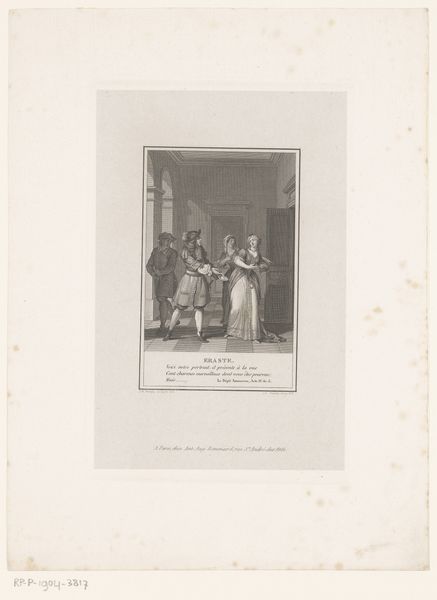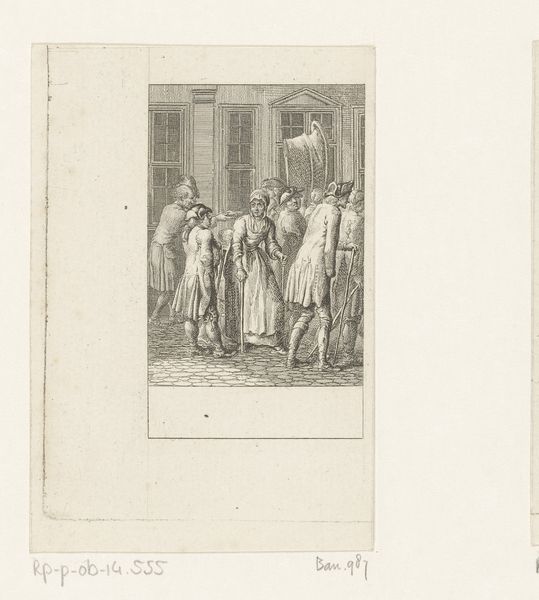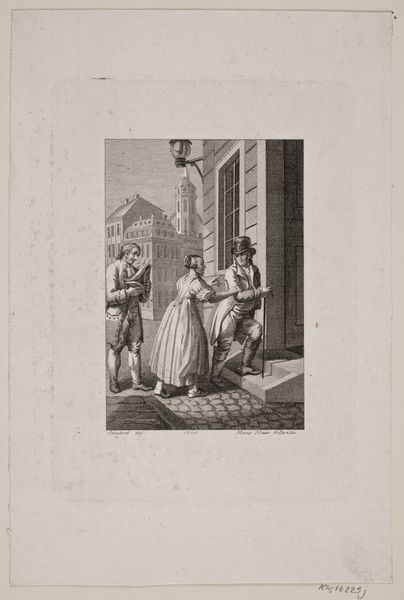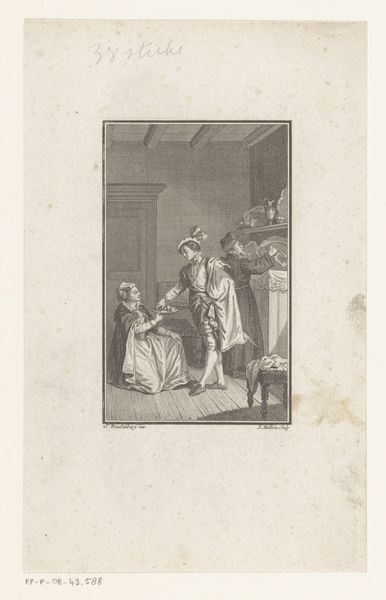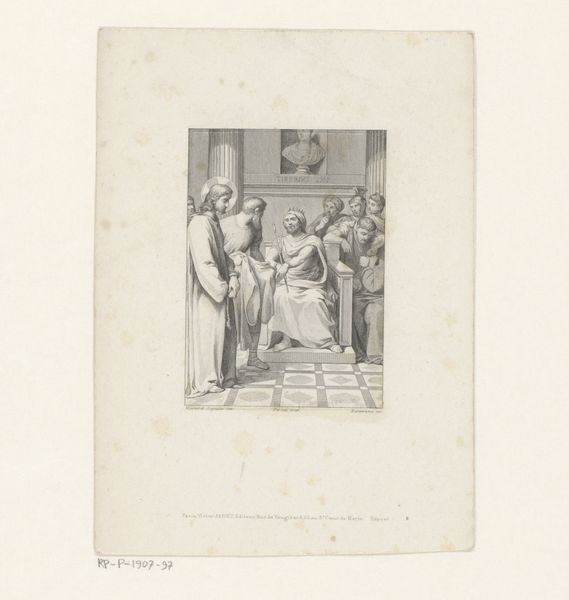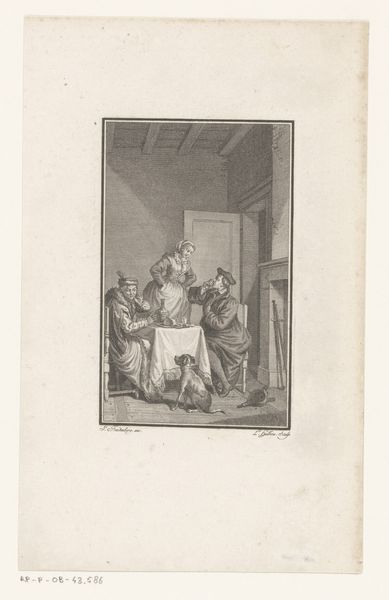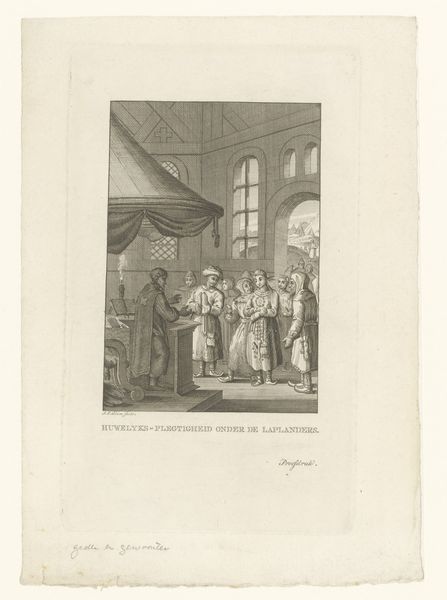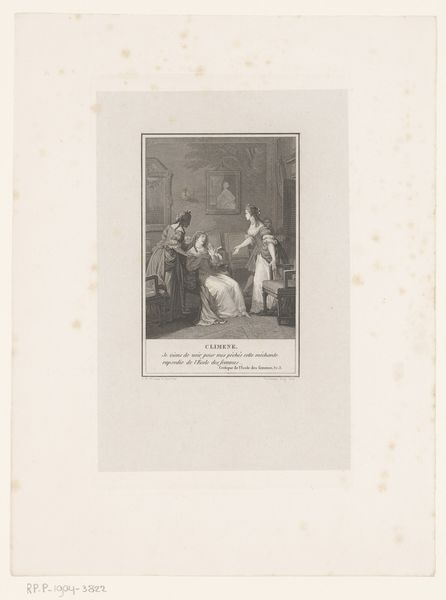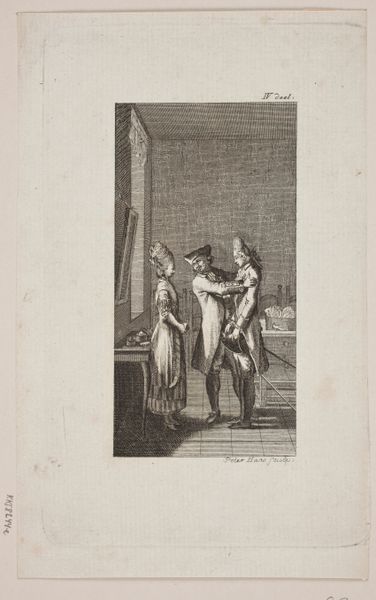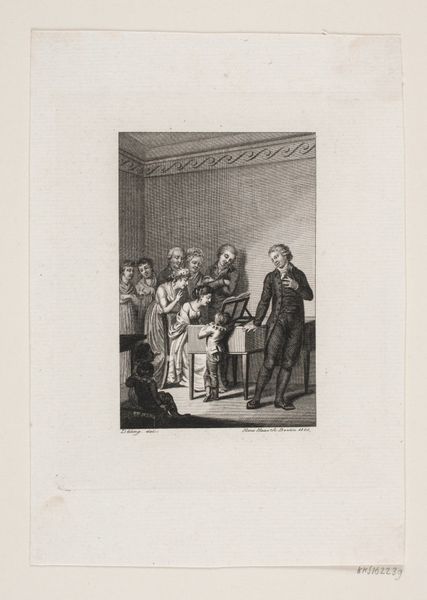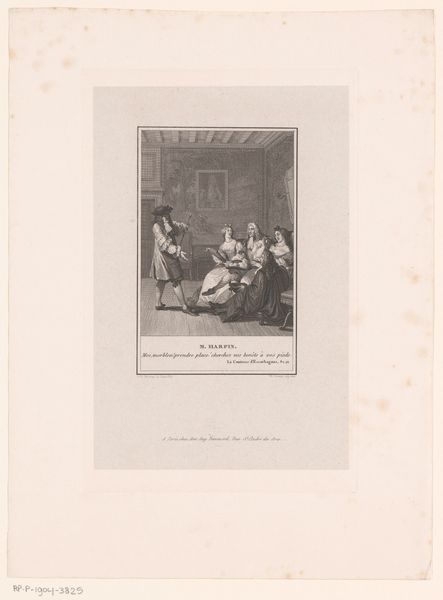
Dimensions: height 148 mm, width 104 mm
Copyright: Rijks Museum: Open Domain
Curator: So here we have a rather curious print by Izaak Jansz. de Wit, entitled "Vijf figuren in een slaapkamerinterieur," placing it somewhere between 1754 and 1809. It resides in the Rijksmuseum's collection. And tell me, what is your initial reaction? Editor: My eye is immediately drawn to the tension in this interior, a stark contrast with the detail given to the clothing and objects. It feels like a stage play caught mid-scene, a sense of dramatic conflict hangs heavy in the air. Curator: Precisely. Look closely at the textures rendered with engraving, how de Wit translates domestic drama into stark blacks and whites. The crosshatching, especially around the faces, conveys so much. The focus on the act of production is telling; from the preparation on the left table, where we see figures holding what appear to be enema syringes. How does it inform your perspective, as someone interested in materials and making? Editor: What I find fascinating is how such everyday activities like bedside manners are immortalized through mass reproducible print. De Wit employed fairly standardized engraving techniques; the physical act of creating these tiny lines across the copper plate would've been very repetitive, very labour intensive. It invites us to consider the skilled labour of engraving and printing as accessible conduits for the portrayal of contemporary societal ills. Curator: And the social context is key. It is considered genre painting but with history painting sensibilities. Those phrases under the artwork mean "You have an evil uncle, but a brave mother, I will save you all,". Could it reflect ideas regarding illness or gender dynamics, for example? Editor: Absolutely. You're spot on! It certainly encourages us to consider how perceptions of family obligations might have been conveyed and consumed in the late 18th Century. Curator: It makes you wonder what narratives we'll be etching into our own digital plates for future eyes to find! A curious piece that shows us not just the past, but how labor and process also help determine history. Editor: Indeed, reflecting how those choices continue to impact our perceptions of those interiors from centuries ago, adding layers of meaning to our viewing experiences even today.
Comments
No comments
Be the first to comment and join the conversation on the ultimate creative platform.
